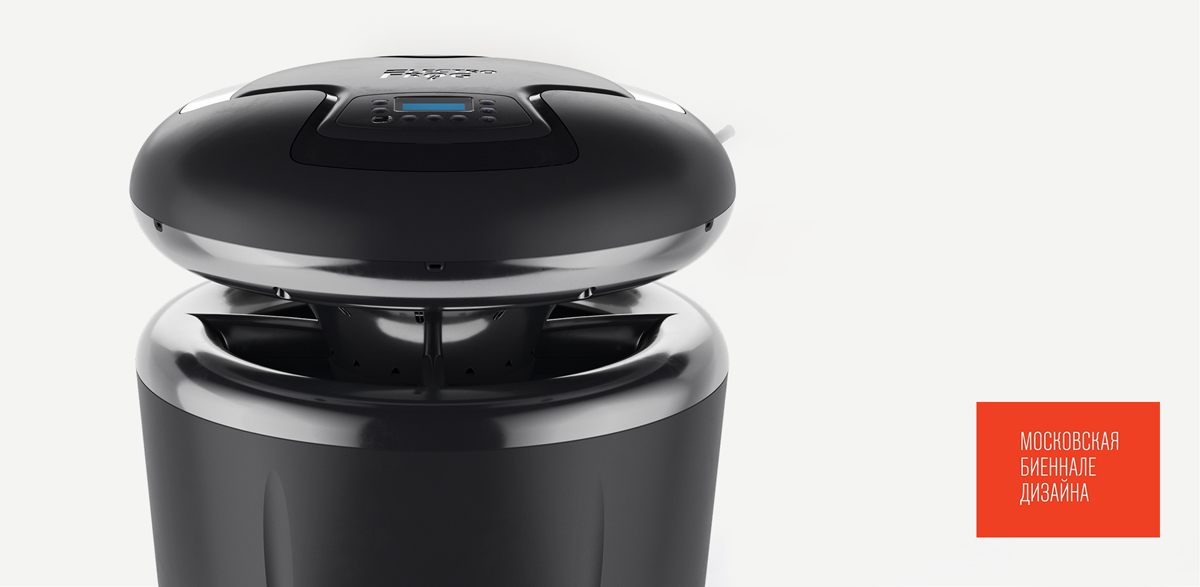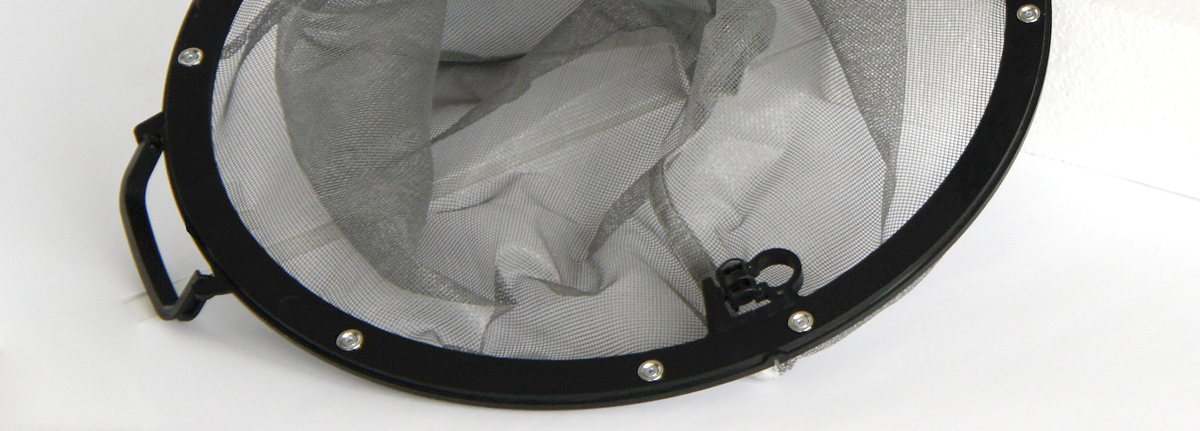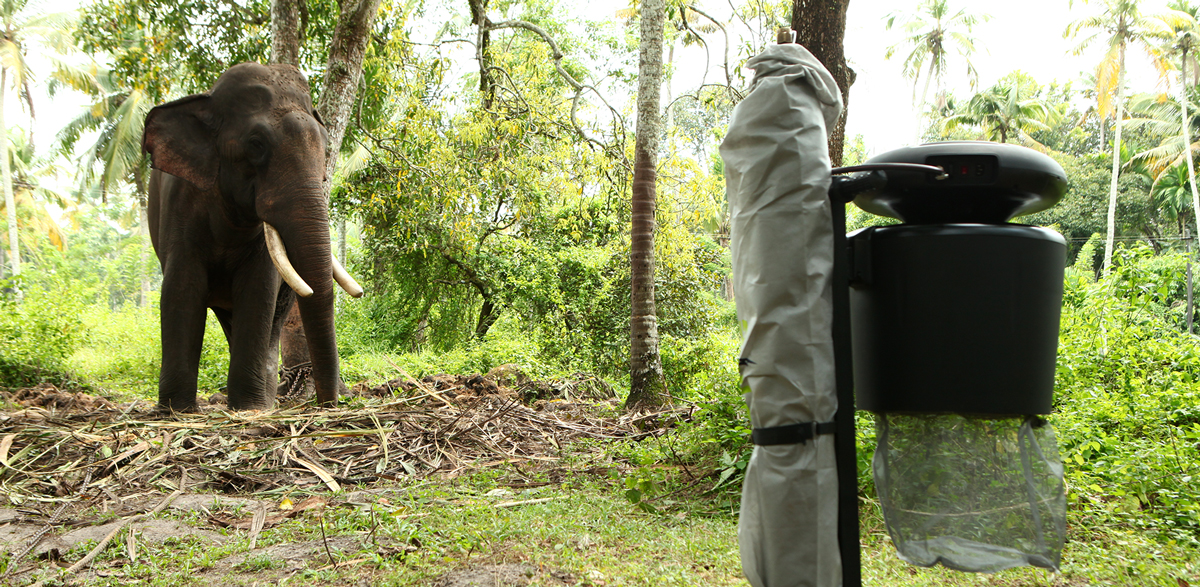AERO
Design project as a product knowledge system integration
In 2015, we designed Aero Mosquito Trap.
And this is a great example of when a designer takes into account and connects in his/her solution the best practices of physicists, designers, technologists, when the device design is not a creation of imagination, but a competent synthesis of objective requirements and limitations.
About the product
Aero is a device that destroys mosquitoes in an area of up to 50 acres in 3 weeks.
To attract insects, the device emits heat, carbon dioxide and bait.
When insects approach, the air sucks them in with an air stream.
The mosquitoes get caught in the net and die of dehydration.
Task
Aero is an expensive device.
It should fit well into the expensive landscapes of country houses and tourist bases. The design of the previous version did not cope with this task.
The external surfaces should be aerodynamic to ensure that the air currents surrounding the enclosure suck in mosquitoes.
Solution
For mosquitoes to be sucked in without interference, the shape must be streamlined.Scientists of the Central Aerohydrodynamic Institute named after Professor N. Ye. Zhukovsky calculated the shape of the inner surface of the future product. We built the design based on it.
In order to increase the efficiency of the device, we had to revise the layout in many ways, we actually turned the layout head down and changed the motor mounting location. The issue of the product cost is always critical.
Any manufacturer risks not fitting into the market requirements without paying attention to this issue. The cost of the enclosure depends on the number of parts, their size, production technology, material and shape.
We chose injection molding technology. Cast parts require tooling.
It pays off in the mass production of 2000 items. The more details, the more molds. The bigger the parts are, the more expensive the mold is. By technological standards, the Aero enclosure is very large, so at the design stage we evaluated several variants of division into parts in order to understand which variant will be cheaper for production. The design of large parts is also strongly influenced by the technological slope. If they are not taken into consideration at an early design stage, the product will strongly change and can lose its features in terms of a visual image before the production stage. The internal design and appearance are more interconnected than it seems at a first glance, so the design engineer and designer work as a team in the process. With the support of Smirnov Design, the Research and Innovation Center of Moscow State Stroganov Academy of Design and Applied Arts.
was established. The Research Center is the general partner of Smirnov Design in the field of scientific activities and educational projects, as well as in the development of new and unique products.
This makes it possible to take into account the elements of the inner design that affect the quality of the outer surface, e.g. take into consideration air locks.
“Air locks” are defects of the outer surface, which are formed if the plastic thickness is distributed unevenly.
Attention to details forms an impression of quality product.
We proposed and implemented several ergonomic and constructive concepts to improve the impression of interaction with a thing.
And even such a part of the work on the product as the color solution is subject to some objective requirements.
The first versions of the device were produced in a blue case, as the blue spectrum attracts these insects. There was even known a mosquito attack on the American infantry. But we had to take into account the image component of the enclosure in our solution, as well as the need to combine the device with the noble landscapes. We changed the color of the enclosure to black one, but compensated this solution with the blue backlight inside the device.
Result
The product has successfully passed the tests even in such severe conditions as tropical Indian forests, it has become a series product.
The project was awarded at the First Moscow Design Biennale.






